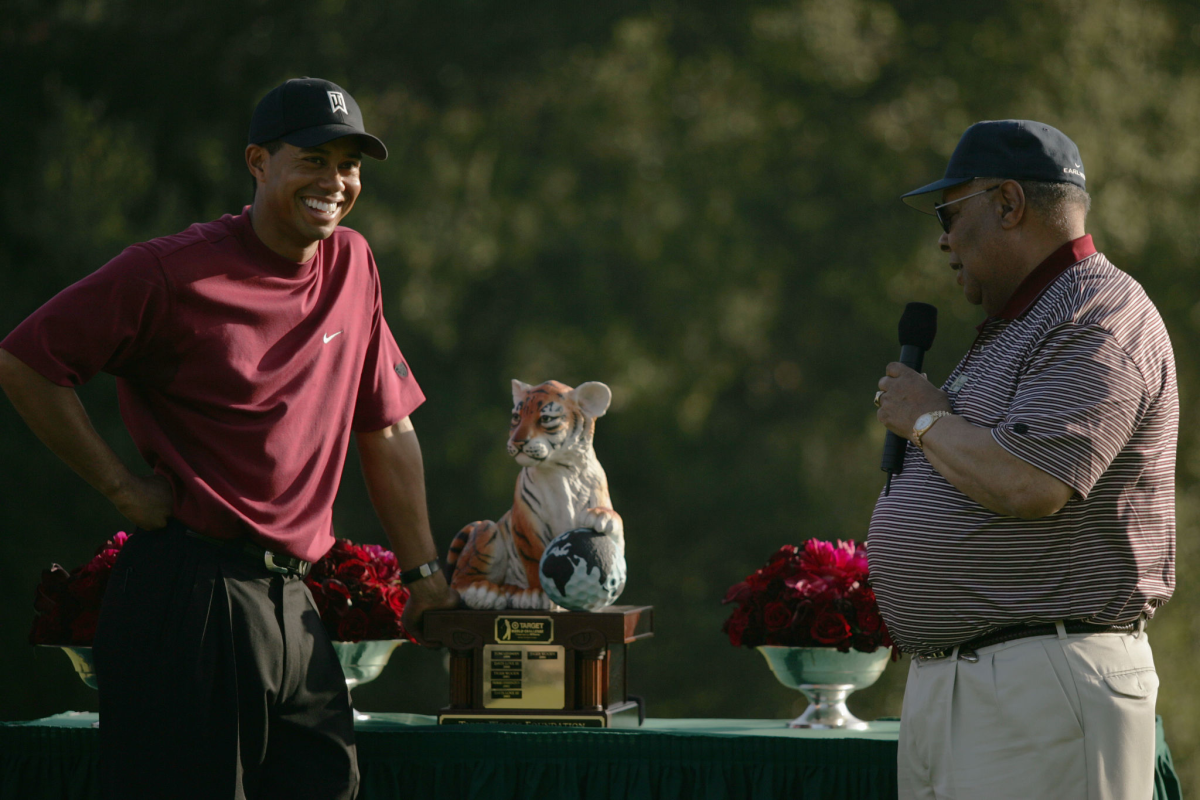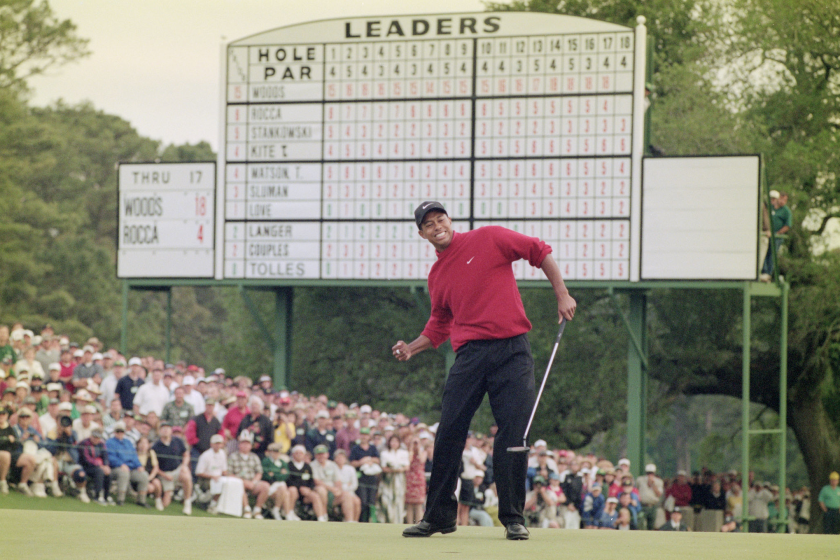A primer on golf moments you won’t see in HBO’s Tiger Woods documentary

- Share via
In the first five minutes of ESPN’s “Last Dance” documentary about Michael Jordan and the Bulls dynasty, there is footage of Jordan’s breakout rookie season, of his six titles, of his dominance on a basketball court.
For all the rabbit holes the 10 episodes explored, the film never failed to return to this central message: The basketball was always center stage.
HBO’s two-part documentary on Tiger Woods, the first of which aired Sunday night, assumes a different format. Woods’ professional exploits are sprinkled throughout “Tiger” — his U.S Amateur three-peat, his first Masters win in 1997, the Tiger slam of 2000 and 2001 most notably — but his personal life is the predominant focus, and will continue to be (even more salaciously) in next Sunday’s finale.
Here are 15 takeaways from Episode 1 of the Tiger Woods documentary, ‘Tiger,’ on HBO.
For golf fans who watched the first episode, which covered the spaces between Woods’ childhood and his 2006 Open Championship victory, there were gaping holes in the rendering of his professional career. These were the most notable omissions, in chronological order:
His amateur career: Woods was more than a child media star growing up. He dominated junior and amateur tournaments at every age. He won the 10-and-under Junior World Golf Championships in 1984 and ’85. From 1988 to 1991, he won the event four more times, once at the 11-to-12 age level, twice at the 13-to-14 level and once at the 15-to-17 level. In 1991, he won the first of three straight U.S. Junior Amateurs, the national championship for players 18-and-under.
His college career: The documentary never directly references Woods’ celebrated, if brief, collegiate career at Stanford. Though he spent only two years as a Cardinal, Woods matched a program record with 11 wins. In 1996, he was the NCAA national champion, the Pac-10 individual champion and won eight of 13 tournaments overall.
His pre-pro PGA Tour events: Woods played in his first PGA Tour event in 1992, when he qualified for the Los Angeles Open as a 16-year-old amateur. In 1993 and ‘94, he qualified for six more tour events, missing the cut each time. In his final year as an amateur in 1995, he played in three majors (all but the PGA Championship) and made the cut in two of them, including a 41st-place finish at the Masters.
His rookie year on the PGA Tour: After playing in three majors as an amateur early in 1996, Woods turned pro that August and played in eight events. In his first professional start at the Greater Milwaukee Open, he made the cut and finished 60th. In his fifth event, he won the Las Vegas Invitational for his first career PGA Tour win. Two weeks later, he won again at the Walt Disney World Classic. In his 11 total events that year, he made 10 cuts and had five top-10 finishes.
‘Tiger,’ premiering Sunday, makes clear that the near-cosmic significance attached to Tiger Woods’ talent was, at least in part, a marketing scheme.
His breakout year: While Woods’ stunning 12-shot win at the 1997 Masters was the most celebrated achievement of his first full professional season, he reached No. 1 in the world rankings for the first time, holding the spot for one week in June and nine weeks beginning in July, and made his debut in the Ryder Cup.
His ascension: After his 1997 Masters win, Woods didn’t win another major until the 1999 PGA Championship, but he continued to cement his place among the best players on Tour. In 1998, he won the BellSouth Classic and finished in the top 10 in three of the four majors. In 1999, he won eight Tour events, including his final four starts. He spent most of this stretch ranked No. 1 in the world, and in August 1999 began what would be a five-year run in golf’s top spot.
His major championship run: In addition to his four consecutive major championship victories between the 2000 U.S. Open and 2001 Masters (the so-called “Tiger Slam”), Woods won 10 other events, including his two starts directly preceding the 2001 Masters — one of which was his first win at the Players Championship. He collected two majors in 2002 — the Masters and U.S. Open.
His major “drought”: For the first time in his professional career, Woods failed to win a major in back-to-back years in 2003 and ’04 . While he still won five tour events in ‘03, he claimed just one event in ’04 (the WGC Matchplay Championship) and lost his No. 1 world ranking to Vijay Singh that September.
His return to No. 1: Woods reasserted his dominance in 2005, when he won two of his first five starts. He collected his fourth green jacket at the Masters, tying Arnold Palmer for the second-most all- time. He won the Open Championship and finished in the top five at both the U.S. Open and PGA Championship. In 2006 he won the Open Championship again and the PGA Championship, both of which came during a careerlong seven-event winning streak, the second-longest in Tour history.
More to Read
Go beyond the scoreboard
Get the latest on L.A.'s teams in the daily Sports Report newsletter.
You may occasionally receive promotional content from the Los Angeles Times.













